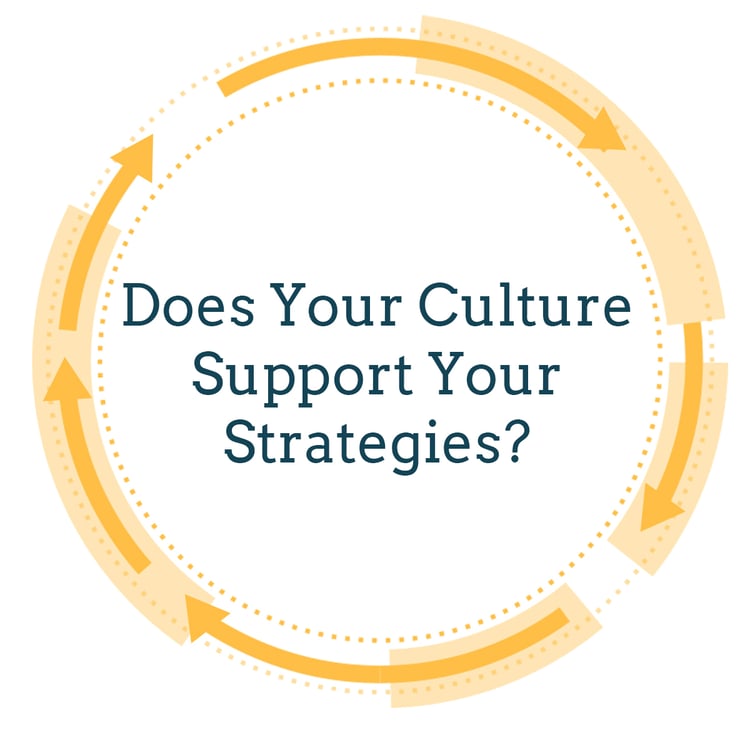
Organizations with internal cultures that are aligned with their strategies are far more effective than those without aligned cultures. Decades of data prove this.[1] For example, over the last 50 years, culture specialist Human Synergistics has compiled data on more than 30,000 organizations and it clearly shows strong correlations between specific organizational culture attributes and business performance. Yet it is common for organizations to ignore culture when trying to implement their strategies.
Agile 2 is a more mature version of Agile, and it relies on having a supporting healthy culture. In fact, analysis that Agile 2 Academy has done with Human Synergistics shows that Agile 2 ideas strongly align with what Human Synergistics calls a Constructive culture, which is the most effective kind.
When an organization decides to adopt Agile 2 (or any Agile) methods, it is common to define a set of “practices” that development teams must follow. This is an essential step, but there are some great perils in assuming this approach is enough:
- Many, if not most, practices require people to learn new skills, make new judgments, and behave in new ways. Practices alone are not enough.
- Most of the obstacles to using Agile 2 (or legacy Agile) methods actually exist outside of the development teams. These obstacles are widespread and manifest as management behaviors, lack of supporting systems that Agile teams need, and processes and procedures that make it nearly impossible for teams to operate with agility.
Peril #1 means that people will not be able to execute the practices. They will “go through the motions”—but Agile 2 (agility) is, in its essence, a replacement of step-by-step processes with just-in-time contextual decision-making. If people follow practices and make poor judgments, then the organization will suffer from ongoing bad decisions and poor outcomes. But if the organization’s culture is one that encourages people to seek safety through following procedure, rather than relying on their judgment, then they will not be willing to make judgments: they will copy what others do, and perhaps do the wrong thing.
Peril #2, that most obstacles to agility originate from beyond the teams, is seldom appreciated by organizations beginning an Agile journey. Senior leadership often views Agile as something that development teams and individual contributors do. They don’t realize the extent to which Agile—having agility—relies on having the right support systems in place and the right kinds of leadership supporting the teams.
If the organization has a culture of hands-off leadership, then people who find themselves in a leadership role will not know how to behave when leadership is needed. For example, a common situation is when managers have learned the Agile practice that teams “self organize” but do not realize that that is just a placeholder or reminder. Most teams cannot self-organize well; they need leadership. Self-organization is an aspiration, not a starting point.
The need for leadership is even more acute when one has many teams, and they need to coordinate, and resolve issues such as “How will we design the product? How will we involve real users? How are we going to integrate? How will we manage quality? How will we support our product? How will we agree on branch and merge strategies for the product as a whole?”
When people in a non-Agile organization implement Agile practices, they look for a rule book or procedure to follow, because that is what they are used to, but there isn’t one. If you were to create one, it would not work everywhere, because every Agile decision and judgment is contextual. It always depends; that is what yields agility and makes it possible for people to select the shortest path for each situation.
The above are aspects of the organization’s culture: the ability to discuss issues openly and honestly so that they can be resolved, the willingness to take risks when making a decision, and the patterns of leadership that people have learned. There are many other dimensions of culture that are essential for agility, such as the inclination to learn, the tendency to try things on a small scale before scaling up, and the acceptance of things not going perfectly the first time.
As Peter Drucker said, “Culture eats strategy for breakfast,” and that certainly is true for Agile transformations. If you don’t address your organization’s culture, your agile strategy with its new practices will fail to yield the desired outcomes, and Agile will become a source of problems instead of a driving force for business agility. The good news is that culture can be changed, with the right commitment and the right approach. Agile 2 Academy considers culture improvement to be an important element in business agility. An Agile transformation strategy that includes analyzing and improving your organization’s culture is far more likely to succeed than simply adopting a set of agile practices or frameworks and hoping for the best.
[1] The best-selling book Accelerate documents research that makes this connection in the context of Agile and DevOps.
More from the blog
View All Blog PostsSubscribe to Our Blog
Fill out your email address to receive notifications about new blog posts from CC Pace!

